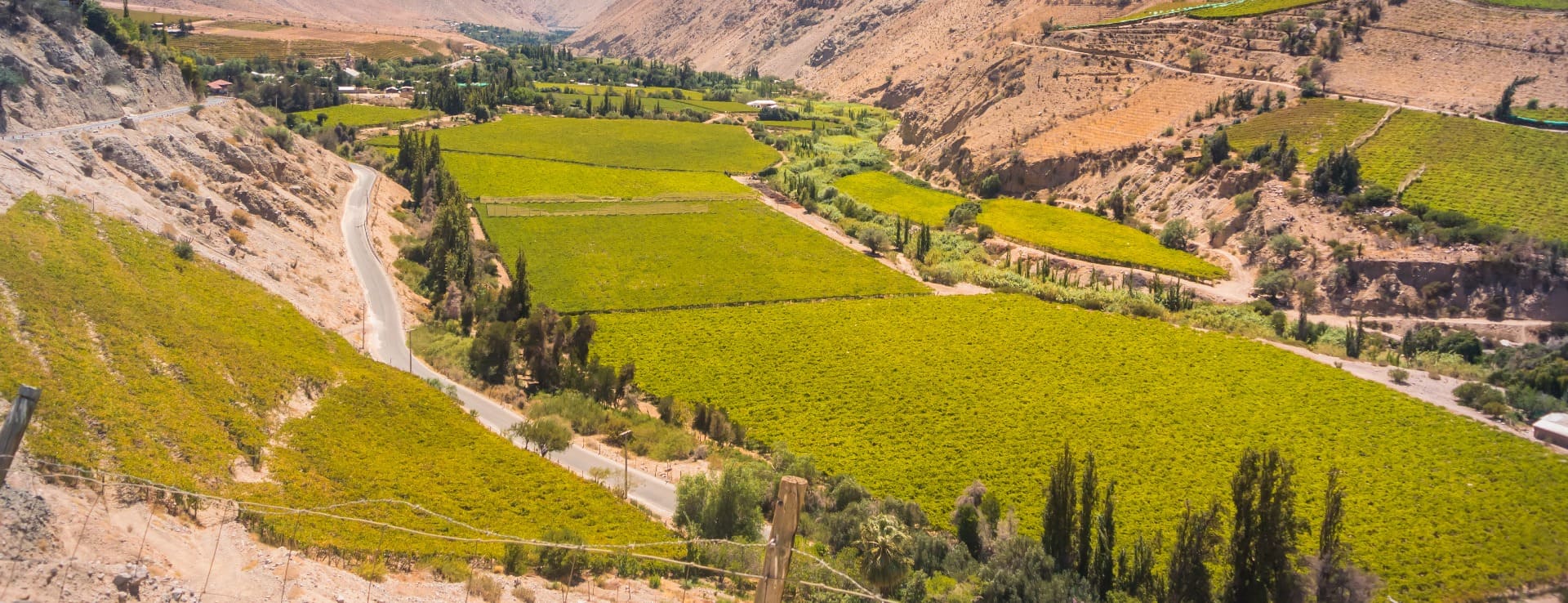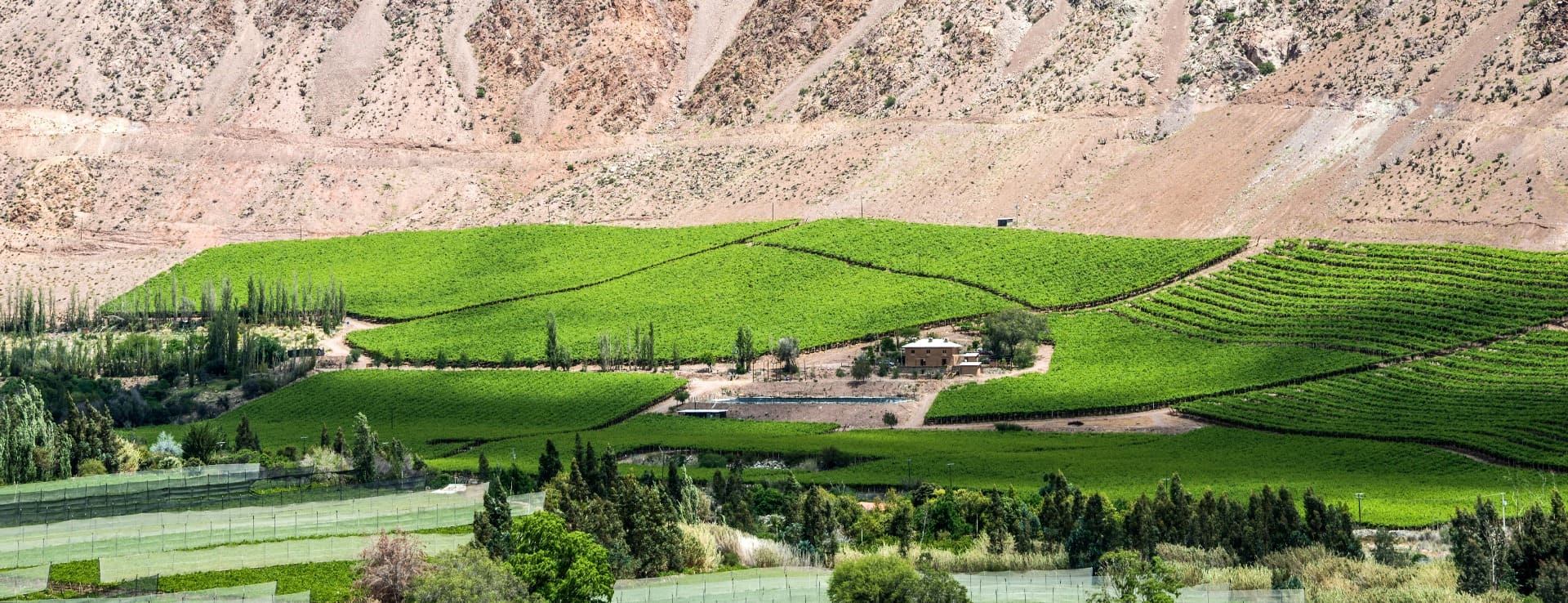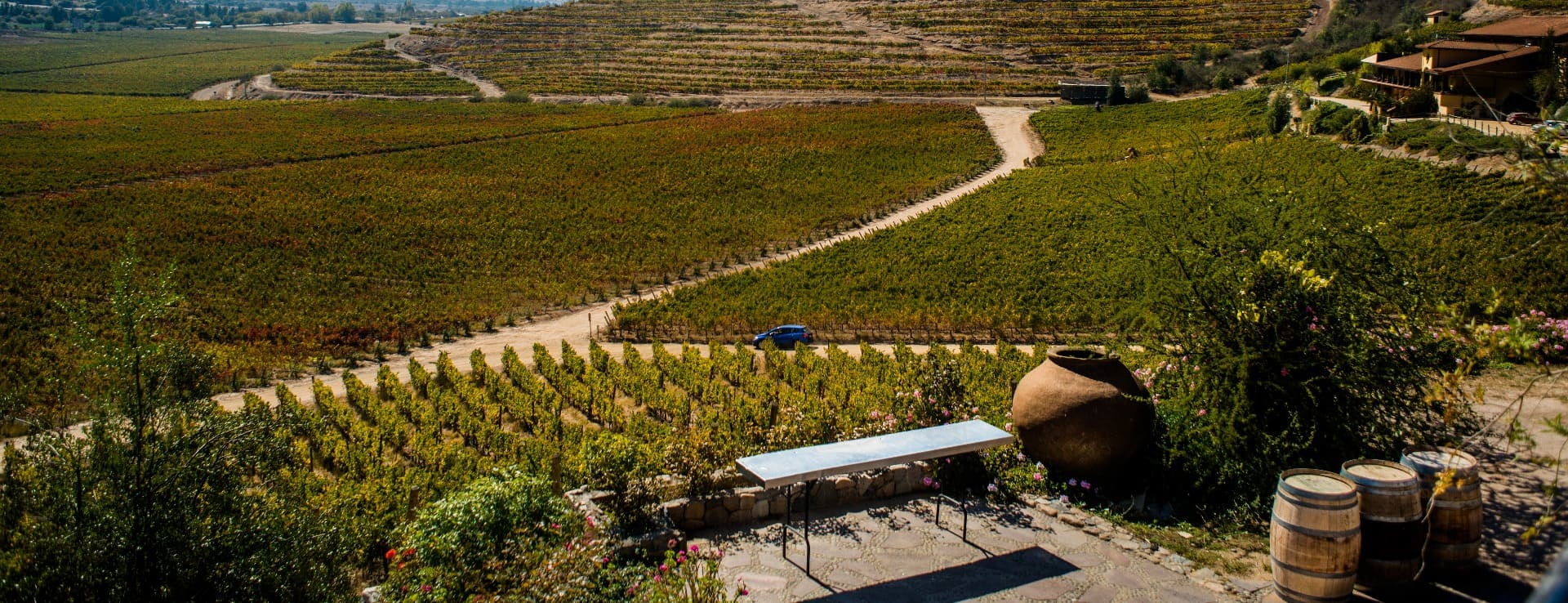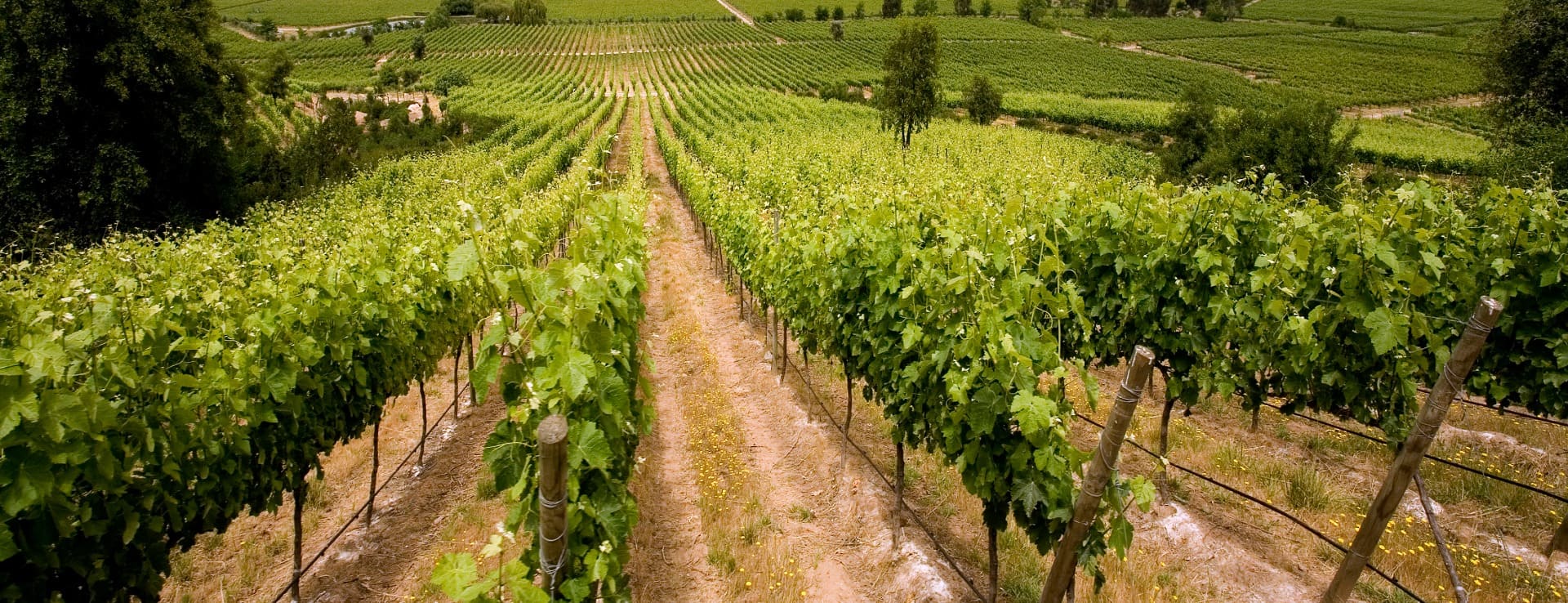Find your winery or vineyard
Infographic of the Denomination of Origin
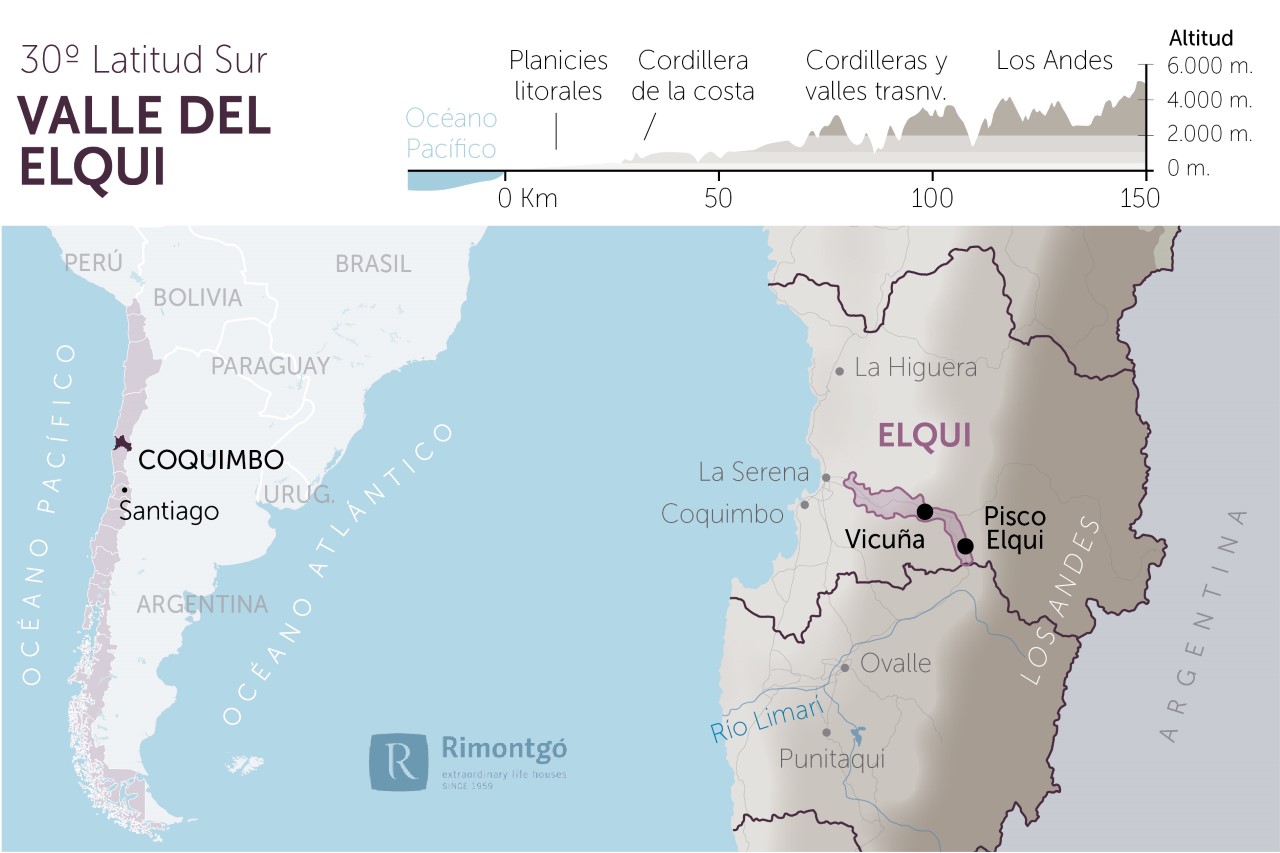
Change to imperial units (ft2, ac, °F)Change to international units (m2, h, °C)
Total surface area:
556 ha1.374 ac
Altitude of the vineyards:
Min: 200m
Max: 2.200m
Min: 656ft
Max: 7.218ft
Temperature:
Min: 7º
Max: 25º
Min: 45°F
Max: 77°F
Yearly rainfall:
75 l/m27 l/ft2
Designation of origin Valle del Elqui
LOCATION AND HISTORY
The Chilean designation of origin Valle del Elqui is located in the Coquimbo region, on the southernmost point of the Atacama Desert. It completely covers the province of Elqui, a Chilean subregion in which the combination of the weather, soil and hydric sources has made possible the development of a blooming winemaking industry. With regards to the vine cultivation, it is necessary to mention the importance of the waters of the Elqui River that water to a large extent the designation of origin and are directed to the vineyard areas.
The Elqui Valley is located in an enclave within close proximity to the city La Serena, an area bathed by the river with the same name. In the wine production context of the designation Valle del Elqui is important to mention the importance of some families emigrating from Italy to the Elqui province at the end of the Second World War who brought to the vicinity of the city of Vicuña the know-how in viniculture. The result, as it can be seen the wines of the wineries such as Viña Falernia, are wines rich in nuances from the Syrah grape variety. On the other side of the Elqui Valley and as a notorious contrast, it stands out the production of wine from high-altitude vineyards from wineries such as Cavas del Valle.
SOILS
Scarce rainfall (no frequent rain in ten months throughout the year) has made extensive use of drip irrigation. The soil of the designation of origin Valle del Elqui is characterized by a slightly alkaline pH.
The Norte Chico has a peculiarity: the Coastal Range is interrupted by the Transverse valleys which are mountain ranges that come off the Andes in an East-West direction and are watered by the rivers, where there is wine making activity.
In the Andes piedmont, viticulture corresponds to two stages: on the colluvial and alluvial movements of the sectors closest to the Central Valley and the second, to the sites located at an altitude of 1,000 meters above sea level.
The colluvium indicates tracking due to gravity or other natural causes downstream being angular material while the alluvium indicates rivers moving material over long distances and depositing it downstream being more polished material.
Analysing from east to west, the first areas to be found are the colluvium cones that are located on the slopes of the mountain range and are formed by immense rock falls from the mountain range, generating deposits at short distances between mountain ranges or hills. In the sectors closest to the soil matrix, thicker material can be observed, such as sand, and in the more distant sectors, clays, finding in the transept a degradation of different sand-loam-clay combinations. Vineyards for sale under these conditions are found in the Elqui Valley.
The main characteristic is given by the presence of the rocks that force the roots of the vines to grow between them, taking root at great depth. The effective presence of soil is low since rocks occupy a great part of it. These soils with very low fertility and a very good infiltration of water, depending on the texture and quantity of rocks, are conditions that are favourable for high quality wines.
CLIMATE
The Elqui Valley suffers great variations in temperature between day and night. The influence of the Pacific coast is noticeable in the warm moderate climate, in contrast to nearby areas where the desert climate predominates. It is an arid Mediterranean climate which is notably influenced by the anticyclone coming from the Pacific Ocean.
Climatically the coluvions, being very close to the Andes, generate a high-thermal amplitude, due to the cold winds that come down from the high peaks from the sunset and during the night. The winter is very cold, arriving in the highest places and further south to fall snow.
As the altitude increases, the probability of winter frosts also increases to give way to a summer season with average maximum temperatures of around 28 to 30º and minimum temperatures of around 12º. In the valleys located northernmost (Elqui, Limarí, Choapa and Aconcagua), the colluvium areas are associated with higher maximum temperatures in the summer months. The beginning of rainfall is usually registered during the month of March.
Unlike the previous descriptions, which were based on geographical and/or geological conditions, the cold valleys are defined by their proximity to the sea. The Pacific Ocean or the increase of the southern latitude are the two variables that generate lower temperatures, especially during the summer months.
These variables always go hand in hand with how the Coastal Range behaves in its westernmost places and the coastal plains of Chile.
The sectors of the Elqui Valley are characterized by the almost total absence of the Coastal Range. In this place the Sauvignon Blanc has developed very well with strong personality, with herbaceous and fresh notes, especially in sectors of the Elqui Valley riverbank. There, the vineyards have been located in alluvial and colluvial areas, being a region of high humidity, especially in the mornings, which increases the probability of phytosanitary damage by the attack of fungi. But with an absence of rainfall in the growing season of the vine, temperatures show a variant of increase, along with the corresponding growth of thermal amplitude. Given these cold weather conditions, the varieties with the greatest potential are Sauvignon Blanc, Syrah, Pinot Noir and Chardonnay.
TYPE OF GRAPE
The vineyard’s surface in the designation of origin Valle del Elqui represents around 450 ha, mainly focused on the production of Muscat grapes dedicated lately to the production of pisco. Other grapes present in this designation of origin are Chardonnay, Sauvignon Blanc, Merlot, Zinfandel, Carménère, Merlot, Pinot Noir and Cabernet Sauvignon.
Discover more wineries and vineyards for sale in these wine regions in Chile
Subscribe to our mailing list to receive news about wineries and vineyards.

